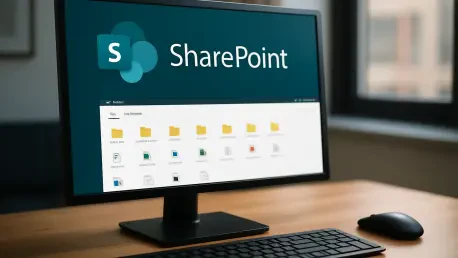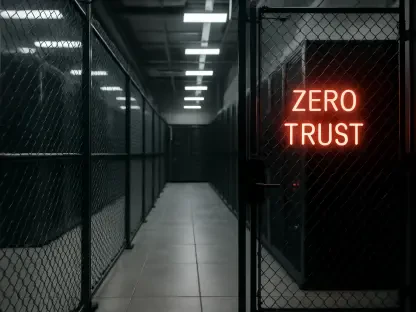The discovery and subsequent exploitation of serious vulnerabilities in Microsoft SharePoint Servers underscore the unrelenting threats facing organizations relying on this pivotal platform. As cyber attackers increasingly leverage these shortcomings, organizations worldwide are placed at risk of severe data breaches and operational disruptions. Two critical vulnerabilities, labeled CVE-2025-53770 and CVE-2025-53771, have emerged as potent threats, enabling unauthorized remote code execution. These flaws, found in on-premise installations of SharePoint, evolved from previously patched issues, raising concerns about the sufficiency and timeliness of past security measures. Their active exploitation accentuates the need for robust and persistent security strategies among enterprises utilizing SharePoint. This exploration delves into the evolution of these vulnerabilities, the exploitation mechanisms at play, and strategic responses necessary to fortify defenses against such advanced cyber threats. The discussion begins by tracing the origins and implications of these SharePoint vulnerabilities.
1. Exploits & Vulnerabilities
CVE-2025-53770 and CVE-2025-53771 represent severe vulnerabilities that have arisen in on-premise Microsoft SharePoint Servers, enabling unimpeded access for attackers. They facilitate the upload of malicious files, trigger unauthorized actions, and the exfiltration of sensitive cryptographic secrets through intricate means such as deserialization attacks and ViewState manipulation. Building upon vulnerabilities initially identified and patched, namely CVE-2025-49704 and CVE-2025-49706, these exploits have evolved due to insufficiencies in the original security patches. This incomplete remediation provides a gateway for attackers to bypass authentication controls, thereby achieving remote code execution without requiring prior login credentials.
One of the primary modalities of exploitation involves the use of deserialization techniques and ViewState abuse, which cunningly circumvent layers of security designed to protect from unapproved access. Despite the implementation of patches, these vulnerabilities persist in their ability to compromise SharePoint instances significantly, sparking concern among global enterprises particularly in sectors such as finance, education, energy, and healthcare. The vulnerabilities allow attackers to deploy specially crafted HTTP requests that exploit the /layouts/15/ToolPane.aspx endpoint, bypassing security mechanisms via a precisely manipulated Referer header.
2. How the Exploit Unfolds
The technical sophistication of these attacks begins with attackers leveraging the flawed endpoint /layouts/15/ToolPane.aspx. By using strategic HTTP requests laced with specific headers like /_layouts/SignOut.aspx, they successfully bypass authentication. This breach points to the lapse in security measures foreseen by earlier patches but clearly not comprehensively countered. Once access is gained, attackers upload a malicious ASPX file, typically spinstall0.aspx, into the server environment. This file’s primary role is to extract sensitive cryptographic configuration, namely the machineKey section, from the SharePoint environment.
Equipped with these cryptographic secrets, attackers can construct a legitimate ViewState payload that facilitates remote execution of commands on the compromised server. The malicious files exploit system weaknesses using tools such as ysoserial to generate a _VIEWSTATE object that deploys without authentication restraints. This escalation paves the way for threats like data tampering, token forgery, and a significant breach of confidentiality, integrity, and availability principles. Technical insight into these malicious ASPX files reveals the reflective code loading technique, which, while not executing additional scripts, substantially increases the risk of unauthorized data access.
3. Technical Details & Security Implications
Delving into the technicalities of these vulnerabilities reveals a concerning level of exposure to cyber threats, emphasizing the urgent need for users’ vigilance and proactive measures. Attackers have methodically leveraged tools such as ysoserial, exploiting Microsoft’s systems to bypass existing security protocols and execute commands remotely. These attacks highlight inherent weaknesses that manifest through the deserialization process, where attackers craft malicious ViewState objects. These objects intricately reference internal system functionality and can execute scripts, including PowerShell commands, that further entrench their control.
Incident reports have observed the web shell scripts written in C# language, utilizing .NET classes to reveal sensitive configurations such as machineKey settings. Such access grants perpetrators the ability to manipulate cryptographic keys like ValidationKey and DecryptionKey—integral components ensuring the security of data transmissions within SharePoint frameworks. Consequently, this exposure amplifies the potential for compromised data integrity and unauthorized access, underscoring the undeniable necessity for improved security measures. Organizations are encouraged to cultivate a robust security infrastructure capable of identifying and nullifying such vulnerabilities before they escalate.
4. Mitigation and Security Enhancements
In response to the pervasive threat posed by these vulnerabilities, Microsoft has released multiple updates aimed at fortifying SharePoint’s defenses against exploitation. Stakeholders maintaining on-premise servers must act swiftly to implement these patches, specifically designed to seal the gaps presented by CVE-2025-53770 and CVE-2025-53771. While affected SharePoint Subscription Edition and Server 2019 have patches available, those utilizing Server 2016 are advised to anticipate forthcoming updates. Despite these measures, it remains imperative that organizations reinforce their cybersecurity policies, adopting a multi-layered defense strategy.
Recommended actions include stringent monitoring for unauthorized changes to the LAYOUTS directory, scrutinizing server logs for unexplained access patterns, and an active audit of configuration files to preempt potential tampering. Implementing a practice of regular updates and patch applications not only mitigates these specific vulnerabilities but also bolsters resistance against emergent threats. Protection solutions like those from Trend Micro, which have proactively shielded clients since the escalation of these vulnerabilities, offer an exemplary model of defense in the enterprise cybersecurity landscape.
Key Takeaways and Proactive Security
The discovery and exploitation of significant vulnerabilities in Microsoft SharePoint Servers emphasize the persistent dangers confronting organizations that depend on this key platform. As cybercriminals increasingly exploit these weaknesses, companies worldwide face the threat of major data breaches and operational upheavals. Two serious vulnerabilities, CVE-2025-53770 and CVE-2025-53771, have surfaced as critical concerns, allowing unauthorized remote code execution. These issues reside in on-premise SharePoint installations and stem from problems that were thought to have been resolved, triggering doubts about previous security updates and their adequacy. Their ongoing exploitation underscores the imperative for comprehensive and enduring security tactics among businesses employing SharePoint. This study examines the development of these vulnerabilities, the exploitation tactics employed, and the strategic measures required to strengthen protection against sophisticated cyber threats, starting with an analysis of the origin and impact of these SharePoint flaws.









